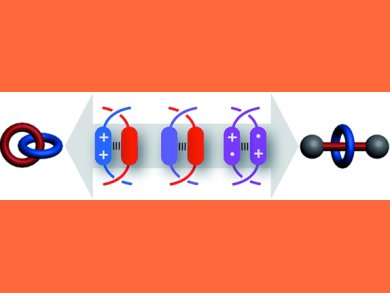Remarkable progress has been made in the past few years in the field of mechanically interlocked molecules (MIMs) based on π–π recognition in terms of both their syntheses and utilization, for example, in molecular electronics, nanoelectromechanical, and drug delivery systems.
J. Fraser Stoddart, Northwestern University, Evaston, IL, USA, and colleagues outline in their review article the progress which has been accomplished during the past decade involving MIMs comprising aromatic π–π stacking interactions.
After an introduction describing the π–π recognition involved in the assembly of MIMs as well as background on donor/acceptor MIMs, the authors profile a series of building blocks used in the construction of MIMs. A large number of comprehensive examples of MIMs are described, including: charged and neutral templates to give catenanes, rotaxanes, pretzelanes, and rotacatenanes as well as metal-ion directed π–π stacked assemblies).
In addition, the authors offer an outlook to the exciting future for the preparation of these captivating π-based molecules through the application of radical templation. This prospect will no doubt stir up interest from those working in the fields of organic and physical chemistry as well as materials science.
- Mechanically Interlocked Molecules Assembled by π–π Recognition,
Gokhan Barin, Ali Coskun, Moustafa M. G. Fouda, J. Fraser Stoddart
ChemPlusChem 2012.
DOI: 10.1002/cplu.201100075
This article is available for free as part of the ChemPlusChem free trial




![Synthesis of [c2]Daisy Chains via Mechanochemistry](https://www.chemistryviews.org/wp-content/uploads/2025/04/202504_RotaxanesWithSolidStateMechanochemistry-125x94.png)